RetroLisa
-------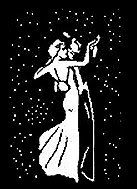 | 1930s Everyday Life | |
|
___________________________________________________________________________________________________________
|
|
|
RetroLisa
| ___________________________________________________________________ | __ | _____________________________ | _______ | Hobos & Tramps
From the 1880s to the 1930s, tramps were a familiar sight along the backroads and railroads of America. Some tramps were men who felt the pull of the open road. They were always looking for that elusive something that lay just around the next bend. Others were simply down on their luck, looking for a better opportunity and a place to call home.

life on the road
Hobos rode the rails. They hopped freight trains and stowed away in boxcars, hoping that the railroad bulls and yard bulls wouldn't find them and throw them off.
Near railroad yards, hobos congregated in hobo jungles, where they boiled coffee in the shadow of the water tank and cooked up mulligan stews. Sometimes they stole chickens and were jailed. They begged for meals at the back door and spent cold winter nights at relief shelters.
Hobos communicated with each other by leaving markings on fences and gateposts. A simple drawing was enough to tell a hobo about the inhabitants of a house and the type of hospitality he could expect there.
Life on the road was no picnic. Each year, thousands of hobos were killed or injured while hopping moving trains. They often went for days without eating and were prone to catching pneumonia.
other groups
The number of teenage hobos increased dramatically in the early 1930s. Known as roving boys and boxcar boys, their reasons for leaving home were as varied as they were. Some sought adventure, while others were looking for work. Many were fleeing broken homes, orphanages and reform schools. If you looked closely, you might find that some of the boys were actually boxcar girls. Teenage hobos usually traveled in groups, where they protected each other and stood up for each other. For them, life on the road was dangerous....in addition to the usual perils, they were easy targets for criminals and sex offenders.
Some hobos were women, who frequently dressed like men. Black and white hobos were often seen traveling together. Misery knows no prejudice.
tramp art
Many tramps repaid homeowners for their hospitality by giving gifts of their own handiwork. They made functional and decorative objects that became known as tramp art. These objects have since attained the status of classic American folk art.
hobo terms
- bindle stiff -- hobo who carries his belongings in a rolled-up bundle
- catch out -- to hop an outbound train
- reefer -- refrigerator car
- gaycat -- novice hobo
- dingbat -- experienced hobo
- riding the rods -- lying in the undercarriage of a boxcar near the wheels
- mulligan stew -- a stew made out of anything that was edible
- bull -- railroad detective
Hobo Signs
Hobo Terminology
Tramp Art
Teenagers Riding The Rails
Folk Artisans Tramp Art
The Hobo
| |
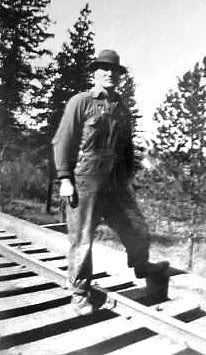
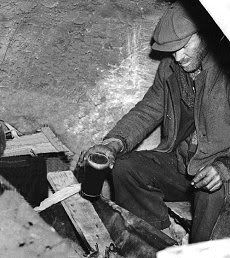

Tramp art: a wall shelf made of twigs
|
_________________________________________________
|
|
|
RetroLisa
| ___________________________________________________________________ | __ | _____________________________ | _______ | Reading Material
magazines
At the newsstand, there were dozens of magazines to choose from, covering every topic under the sun. By far, the most popular themes were detective fiction and western fiction.
| | |
| _________________________________ | _________________________________ | __ | _____________________________ | _______ | detective fiction
- Double Detective
- Detective Tales
- Clues
- Ten Story Gang
- Nick Carter Magazine
- Detective Weekly
- Detective Novels
- Detective Story
- Black Mask
- Private Detective
- Undercover Detective
- Black Book Detective
- Secret Agent Detective Mysteries
- Inside Detective
- True Detective
western fiction
- Western Story
- Popular Western
- Real Western
- Western Love Story
- Western Novel
- Cowboy Short Stories
- Thrilling Western
- Famous Western
- Sure-Fire Western
- Western Fiction
- Smashing Western
- The Western Raider
- Two-Gun Western
- Red Seal Western
- Lariat Story Magazine
adventure, science-fiction, horror
- Golden Fleece
- Sky Fighters
- Sky Devils
- Amazing Stories
- Doc Savage
- Top-Notch
- The Shadow Magazine
- Adventure
|
movies & radio
- Silver Screen
- Photoplay
- Screenland
- Radio Round-Up
- Film Fun
- RadioLand
- Billboard
romance
- True Story
- True Confessions
- Breezy Stories
- Complete Loves
- Romantic Range
- Sweetheart Stories
- Love Tales
- True Romances
other magazines
- Collier's
- Life
- Look
- Redbook
- McCall's
- Companion
- Liberty
- Vanity Fair
- The New Yorker
- Time
| |
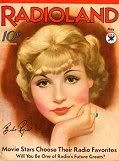
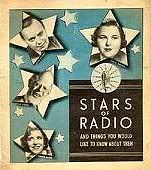
Stars Of Radio
And Things You Would Like
To Know About Them
|
__________________________________________
|
|
|
RetroLisa
| ___________________________________________________________________ | __ | _____________________________ | _______ | Communication
telegrams
telegram usage in the 1930s
All long-distance phone calls were assisted by an operator. Making a call to another exchange could often be a time-consuming, frustrating process. Consequently, telegrams were a popular alternative for sending long-distance greetings.
sending a telegram
First of all, you wanted your message to be as short (and therefore as cheap) as possible. If you needed help, there were plenty of booklets available that suggested messages for every occasion and provided one-word abbreviations for common phrases.
To send a telegram, you called your message in or filled out a blank form at the telegraph office. The message was sent out over telegraph lines and was printed out by a teleprinter at the receiving end. Uniformed messengers used bicycles to deliver telegrams to their intended recipients. In the 1930s, Western Union employed 14,000 uniformed messengers.
new kinds of telegrams
In 1933, radio personality Rudy Vallee received the first singing telegram. These popular musical messages were known as Sing-o-grams.
Traditional telegrams were printed on plain white paper. To compete with the greeting card industry, Western Union introduced the first decorated holiday greetings in 1935. For 25 cents, you could choose a message from the options provided, or for 35 cents you could compose your own message of 15 words or less. Attractive telegram headers were designed by many famous artists of the day.
History Of Telegrams
| |

Blank telegram form
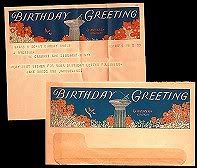
Birthday telegram
|
_________________________________________________
|
|
|
RetroLisa
| ________________________ | __________________________ | __ | ___________________________________________ | _________ | Trends
most popular
baby names
of 1935
girls
Mary
Shirley
Barbara
Betty
Patricia
Joan
Dorothy
Margaret
Maria
Helen
|
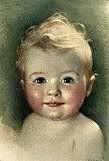
boys
James
Robert
John
William
Richard
Charles
Donald
Thomas
Ronald
David
| |
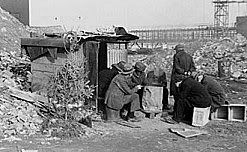
financial hardship
The 1929 stock market crash created the worst economic crisis in American history. Our lifestyles in the 1930s were dramatically altered by the Depression, and the people who lived through it were changed forever. Visit my Great Depression page to learn about it.
|
| ___________________________________________________________________ | __ | _____________________________ | _______ | debutantes & cafe society
The Depression didn't cause financial hardship for everyone. In the 1930s, young ladies from upper class families still attended finishing schools and made their debut in adult society.
Every year, reporters chose a society heroine to profile in their magazines. Many debutantes were featured in Life magazine after it switched from a humor format to photojournalism in 1936. During the Depression, magazines focused on "poor little rich girls" like Doris Duke and Barbara Hutton. Later in the 1930s, they featured more traditional debs like Eleanor "Cookie" Young, Gloria "Mimi" Baker, Cobina Wright Jr. and the most famous of them all, Brenda Frazier.
Barbara Hutton's 1930 debutante ball was the most expensive in history, costing over $60,000. By comparison, a more modest ball cost $16,000....a large amount for any era, but especially outrageous during the Depression. Brenda Frazier's 1938 debut was held at the Ritz-Carlton Hotel in New York City and was attended by 1,400 guests. At the ball, debutantes wore light-colored evening gowns and above-the-elbow white gloves.
After their debut, wealthy young ladies entered cafe society. They were paired with every eligible young bachelor and playboy in town, and they partied until dawn at the 21 Club, the Stork Club and The Colony.
Barbara Hutton
Brenda Frazier
| |

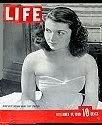
Brenda Frazier
|
_________________________________________________
|
|
|
RetroLisa
| ________________________________________________________________ | __ | ________________________________ | _______ | Education
attendance & graduation rates
The Depression had a big impact on school attendance in the 1930s. For some teens, the lack of jobs actually kept them in school when they otherwise would have quit. For the majority of students, the poor economy was responsible for a major decline in attendance. Nearly half of the nation's children were not in school in the early 1930s.
Many children stayed home when a lack of funding forced their schools to close. It was also very difficult for children in migrant families to attend school regularly. For other kids, putting food on the table was more important than staying in school. Desperation forced many young people to quit school and go to work. This wasn't easy....in the early 1930s, 75 percent of teens looking for work couldn't find it.
As the economy improved, things began to look up. The high school graduation rate jumped from 29 percent in 1930 to 49 percent in 1940.
Of those who did graduate, the majority were female. While the young men were going out to get jobs, the young ladies usually stayed at home, and consequently more of them finished school.
equipment & curriculum
For nearly 100 years, children learned to read using outdated books like the McGuffey Readers. In 1931 it was time for a change, and we were introduced to the characters of Dick, Jane and Sally in the first Dick & Jane readers.
The first driver's education class was offered by a Pennsylvania high school in 1934. Beginning in 1935, educational materials and instructional films were produced by the American Automobile Association.
transportation
In the old days, school transportation was not standardized or consistent. Some school districts hired local townspeople to drive children to school in rickety wagons or makeshift buses. If your district didn't provide transportation, you found your own way to get to school, either by walking, paying for a private bus service, or hitching a ride with the teacher. It was common for high school students to take the train, since many of them attended schools in other towns.
By the 1930s, most school districts offered some form of transportation. In the 1920s and 1930s, modern buses with steel frames were designed especially for transporting children. Yellow became the official color in 1939 when the first school bus safety standards were enacted.
one-room schools & consolidation
When the decade began, there were still 150,000 one-room schools in the United States. Each school had one teacher, who taught up to 40 pupils at all grade levels. At recess, students enjoyed sledding, skating and playing baseball. Quite often, the teacher joined in the fun. The end of the school year was celebrated with a picnic.
By the end of the decade, the number of one-room schools was beginning to decrease. Many communities were consolidating their school districts, closing their country schools, and sending the rural kids to schools in town.
Dick & Jane Readers
School Bus History
| |

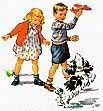


|
_________________________________________________
|
|
|
RetroLisa
| ___________________________________________________________________ | __ | _____________________________ | _______ | On The Job
common jobs
male
- soda jerks
- elevator operators
- bellhops
- doctors making house calls
- railroad workers
- the milkman
- streetcar conductors
- telegram delivery boys
- the ice man
- tailors
- Pullman car porters
- factory workers
female
- milliners
- telephone operators
- cigarette girls
- sales clerks
- secretaries
- teachers
- seamstresses
- domestic help
hours & working conditions
In 1935, the Wagner Act gave workers the legal freedom to unionize.
The 1938 Fair Labor Standards Act prohibited children under 14 from working. This law didn't apply to paperboys.
Shorter work weeks became common in the 1930s. The standard six-day week began to vanish as more employers granted Saturday afternoons off. Other employers followed the example of the Ford Motor Company and switched to a five-day work week. Paid holidays, yearly vacations and an eight-hour day were also becoming more common.
typical salaries
bus driver..................................$1,373 per year
secretary...................................$1,040 per year
---------...................................$15 per week
manager of loan company.............$45 per week
department store clerk................$5 to $10 per week
dressmaker.................................$780 per year
textile worker..............................$435 per year
teacher.....................................$1,227 per year
college professor.........................$3,111 per year
hired farm hand..........................$216 per year
live-in maid................................$260 per year
female domestic servant..............$1 per day
(wages for maids and farm hands may have been low, but keep in mind that many of them were live-in workers who had their lodging and meals provided for them)
doctor........................................$3,382 per year
congressman...............................$8,663 per year
| |
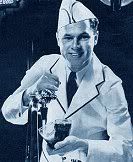

|
_________________________________________________
|
|
|
